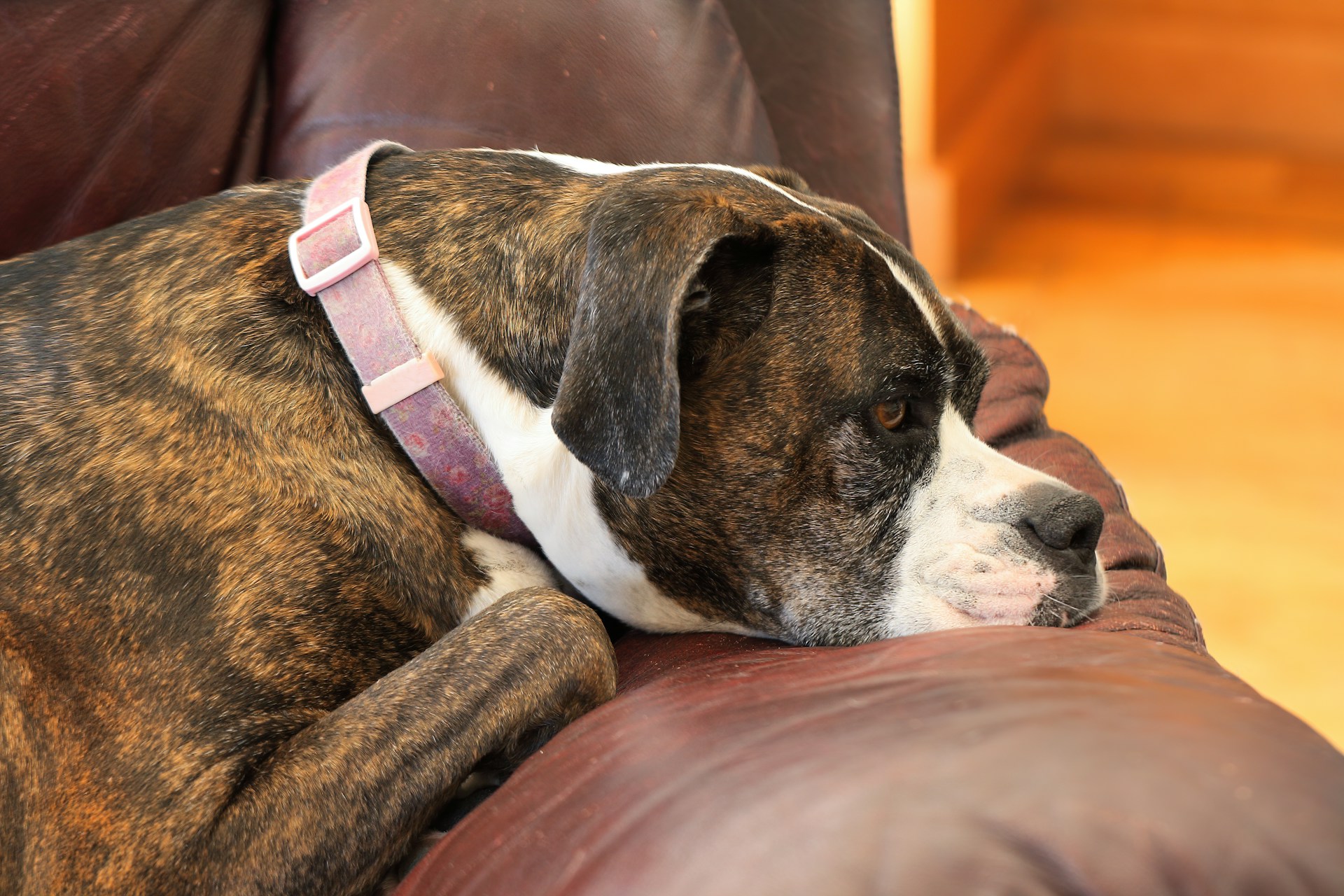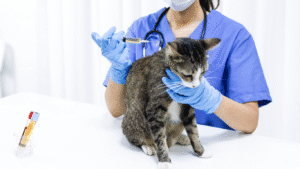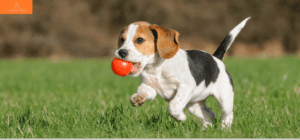Does your furry friend seem on edge? Whining incessantly, pacing relentlessly, or cowering in fear during seemingly ordinary situations – these might be signs of anxiety in dogs. Anxiety is a surprisingly common issue affecting millions of canine companions worldwide. This comprehensive guide delves into the world of dog anxiety, empowering you to recognize the subtle and not-so-subtle signals your dog might be sending.
The World of Dog Anxiety: More Than Just the Jitters
a. Defining Dog Anxiety:
Let’s begin by understanding what dog anxiety is. It’s a behavioral and emotional response triggered by fear, stress, or perceived threats. Imagine your dog feeling overwhelmed or unsafe in a situation – that’s the essence of canine anxiety.
The Impact of Dog Anxiety:
Unfortunately, anxiety isn’t just a passing feeling for dogs. It can significantly impact their well-being. Anxious dogs might experience:
a. Decreased Quality of Life:
Constant fear and stress can make it difficult for dogs to enjoy daily activities and interactions.
b. Behavioral Problems:
Anxiety can manifest as destructive behaviors, excessive barking, or even aggression due to underlying fear.
c. Physical Health Issues:
Chronic stress can take a toll on a dog’s physical health, leading to digestive problems, weakened immune systems, or skin issues.
Understanding the Causes of Dog Anxiety:
Many factors can contribute to dog anxiety, including:
a.. Genetics and Breed Predisposition:
Certain breeds like German Shepherds, Labrador Retrievers, and Border Collies may be more prone to anxiety due to genetics or selective breeding for specific traits.
b. Early Life Experiences:
Negative experiences during puppyhood, such as abandonment, lack of socialization, or abuse, can increase anxiety risks later in life.
c. Environmental Factors:
Loud noises, unfamiliar situations, separation from loved ones, and changes in routine can all trigger anxiety in dogs who thrive on predictability.
d. Underlying Medical Conditions:
Sometimes, anxiety can be a symptom of an underlying medical condition, like thyroid problems or pain. Consulting your veterinarian is crucial to rule out any medical causes.
Recognizing the Signs: Symptoms of Dog Anxiety
Now that we understand the impact of anxiety, let’s delve into the various signs and symptoms that might indicate your dog is struggling. Remember, these signs can vary depending on the individual dog and the severity of their anxiety. Here’s a breakdown categorized for easier identification:
1. Behavioral Changes:
a. Destructive Behaviors:
Chewing furniture, digging in the yard, excessive scratching, or destructive licking can all be signs of an anxious dog trying to cope with their stress.
b. Elimination Issues:
Urinating or defecating indoors can be a frustrating issue, but sometimes, it’s not a housetraining problem – it can be a sign of anxiety-induced stress.
c. Pacing and Restlessness:
Does your dog seem like they can’t settle down? Excessive pacing, whining, and inability to relax are common signs of anxiety in dogs.
d. Escape Attempts:
Destructive attempts to escape crates, carriers, or fenced yards can be driven by fear and a desperate need to feel safe.
e. Changes in Play:
A normally playful dog who suddenly loses interest in playtime, hides, or cowers during interactions might be experiencing anxiety.
2. Physical Signs:
a. Excessive Panting:
Panting outside of hot weather or exercise can be a physical manifestation of anxiety in dogs. It’s their way of trying to calm themselves down.
b. Yawning and Lip Licking:
These appeasement behaviors are often signs of discomfort and anxiety. Your dog might be trying to signal they’re feeling stressed.
c. Dilated Pupils and Flattened Ears:
Changes in facial expressions and body posture offer valuable clues about a dog’s emotional state. Dilated pupils and flattened ears often indicate fear or anxiety.
d. Trembling and Shaking:
Physical trembling and shaking can be a clear sign of fear and anxiety in dogs. If your dog exhibits this behavior, it’s important to identify the trigger and address it calmly.
e. Loss of Appetite and Digestive Issues:
Changes in eating habits, including loss of appetite or vomiting, can be anxiety-related. A stressed dog might lose interest in food, or their digestive system can become upset due to the physiological response to anxiety.
Common Anxiety Triggers in Dogs: Identifying the Source of Stress
Understanding what triggers your dog’s anxiety is the first step towards effectively managing it. Here’s a breakdown of some common anxiety triggers in dogs:
a. Separation Anxiety:
Fear of being left alone is a prevalent anxiety issue, especially in dogs who have formed strong attachments to their owners. This can manifest through destructive behaviors like chewing or excessive barking when separated from their loved ones.
b. Social Anxiety:
Fear of unfamiliar people, dogs, or new environments can make social interactions stressful for some dogs. This might show as shyness, barking, or lunging at perceived threats.
c. Noise Anxiety:
Loud noises like thunder, fireworks, or car alarms can trigger anxiety in noise-sensitive dogs. These can cause them to pace, pant, hide, or even become destructive in their attempts to escape the frightening sounds.
d. Travel Anxiety:
Car rides, trips to the vet, or any form of travel can be anxiety-provoking for some dogs. They might associate travel with unpleasant experiences or feel insecure in unfamiliar environments.
e. New Experiences:
Dogs are creatures of habit, and introducing new pets, furniture, or even a change in routine can trigger anxiety in some dogs who prefer predictability. This might manifest as withdrawn behavior, whining, or destructive chewing.
Helping Your Anxious Dog: Calming Techniques and Management Strategies
Now that you’re equipped to recognize the signs of anxiety in your dog and understand potential triggers, here are some valuable tools to help your furry friend feel calmer and more secure:
Creating a Safe Space:
Provide your dog with a designated calming area, a crate, or a quiet corner where they feel safe and secure. This space should be comfortable, familiar, and away from the source of their anxiety. Line the crate with soft bedding and include calming items like a favorite toy or a pheromone-infused spray.
Desensitization and Counterconditioning:
These techniques are powerful tools for gradually reducing your dog’s anxiety response to specific triggers. Desensitization involves gradually exposing your dog to the trigger in a controlled way at a low intensity level that doesn’t cause them anxiety. Counterconditioning involves pairing the trigger with something positive, like treats or praise, to help your dog form new positive associations. For example, if your dog is afraid of thunder, you could play recordings of thunder at a very low volume while offering them treats or praise for remaining calm. Gradually increase the volume over time as your dog becomes more comfortable. It’s crucial to consult with a certified animal behaviorist to develop a personalized desensitization and counterconditioning plan for your dog.
Exercise and Play:
Physical activity is a fantastic stress reliever for both humans and dogs! Regular walks, playtime, and engaging activities can help reduce your dog’s anxiety levels and promote relaxation. Choose activities your dog enjoys and that fit their energy level and abilities.
Positive Reinforcement Training:
Positive reinforcement training techniques that reward good behavior are crucial for building trust and communication with your dog. By rewarding calm and confident behavior, you can encourage your dog to feel more secure in situations that previously triggered anxiety.
Maintaining a Consistent Routine:
Dogs thrive on predictability. Creating a consistent routine for meals, walks, playtime, and bedtime can provide a sense of security and reduce anxiety caused by unexpected changes.
Consider Medication (under veterinary guidance):
In some cases, medication might be necessary to manage severe anxiety. Consult your veterinarian to discuss if medication is the right approach for your dog’s specific needs. Remember, medication should be used alongside behavior modification techniques for optimal results.
Additional Tips for Supporting Your Anxious Dog
Here are some additional tips to keep in mind as you help your anxious dog:
Stay Calm:
Your dog picks up on your emotions. If you appear anxious or stressed, it can worsen your dog’s anxiety. Project calmness and confidence to reassure your furry friend.
Avoid Punishment:
Punishing your dog for anxiety-related behaviors will only increase their stress and fear. Focus on positive reinforcement and rewarding calm behavior.
Provide Mental Stimulation:
Mental stimulation through interactive toys, puzzle feeders, or training exercises can help tire your dog out mentally and reduce anxiety.
Consider Alternative Therapies:
Some pet owners find alternative therapies like calming music, aromatherapy, or massage therapy helpful in managing their dog’s anxiety. It’s important to consult with your veterinarian before trying any alternative therapies to ensure they are safe and appropriate for your dog.
Seek Professional Help:
If your dog’s anxiety is severe or you’re struggling to manage it on your own, consulting a certified animal behaviorist can be incredibly beneficial. A behaviorist can create a personalized treatment plan tailored to your dog’s specific needs and triggers.
Conclusion: Building a Happy and Healthy Life with Your Dog
Anxiety in dogs can be a challenging issue, but with patience, understanding, and the right tools, you can help your furry friend feel calmer and more secure. Remember, consistency and positive reinforcement are key. By creating a safe and loving environment, addressing triggers, and implementing management strategies, you can build a happy and healthy life with your canine companion.
Here are some final takeaways:
- Early intervention is crucial. The sooner you address your dog’s anxiety, the easier it will be to manage.
- Be patient and positive. Changing behavior takes time and consistency. Celebrate small victories and stay positive throughout the process.
- Don’t hesitate to seek professional help. A certified animal behaviorist can provide valuable guidance and support on your journey to helping your dog overcome anxiety.
FAQs: Signs of Anxiety in Dogs
1. What are some common signs of anxiety in dogs?
- Behavioral changes: Destructive chewing, elimination issues, pacing, escape attempts, changes in playfulness.
- Physical signs: Excessive panting, yawning and lip licking, dilated pupils and flattened ears, trembling and shaking, loss of appetite or digestive issues.
2. What are some common triggers of anxiety in dogs?
- Separation anxiety: Fear of being left alone.
- Social anxiety: Fear of unfamiliar people, dogs, or environments.
- Noise anxiety: Fear of loud noises like thunder, fireworks, or car alarms.
- Travel anxiety: Anxiety associated with car rides or vet visits.
- New experiences: Anxiety caused by changes in routine or introduction of new pets or furniture.
3. How can I help my anxious dog at home?
- Create a safe space for them.
- Use desensitization and counterconditioning techniques to gradually reduce their anxiety response to triggers.
- Provide regular exercise and playtime.
- Use positive reinforcement training to reward calm behavior.
- Maintain a consistent routine.
4. When should I consider medication for my dog’s anxiety?
Consult your veterinarian if your dog’s anxiety is severe or you’re struggling to manage it with behavior modification techniques alone. Medication can be a helpful tool alongside training and management strategies.
5. Are there any alternative therapies that can help my anxious dog?
Some pet owners find alternative therapies like calming music, aromatherapy, or massage therapy helpful. It’s important to consult with your veterinarian before trying any alternative therapies to ensure they are safe for your dog.
6. When should I seek professional help for my dog’s anxiety?
If your dog’s anxiety is significantly impacting their quality of life or you’re feeling overwhelmed, consulting a certified animal behaviorist can be highly beneficial. They can create a personalized treatment plan to address your dog’s specific needs.




